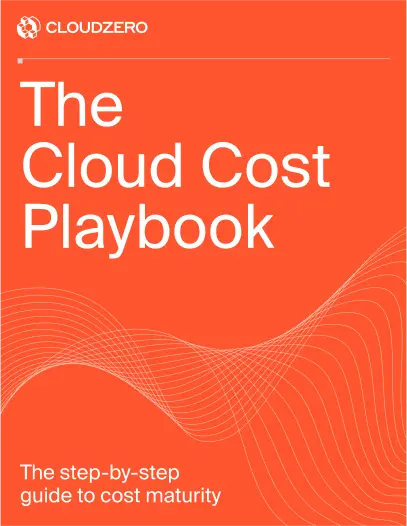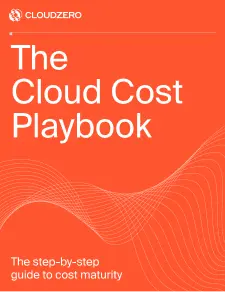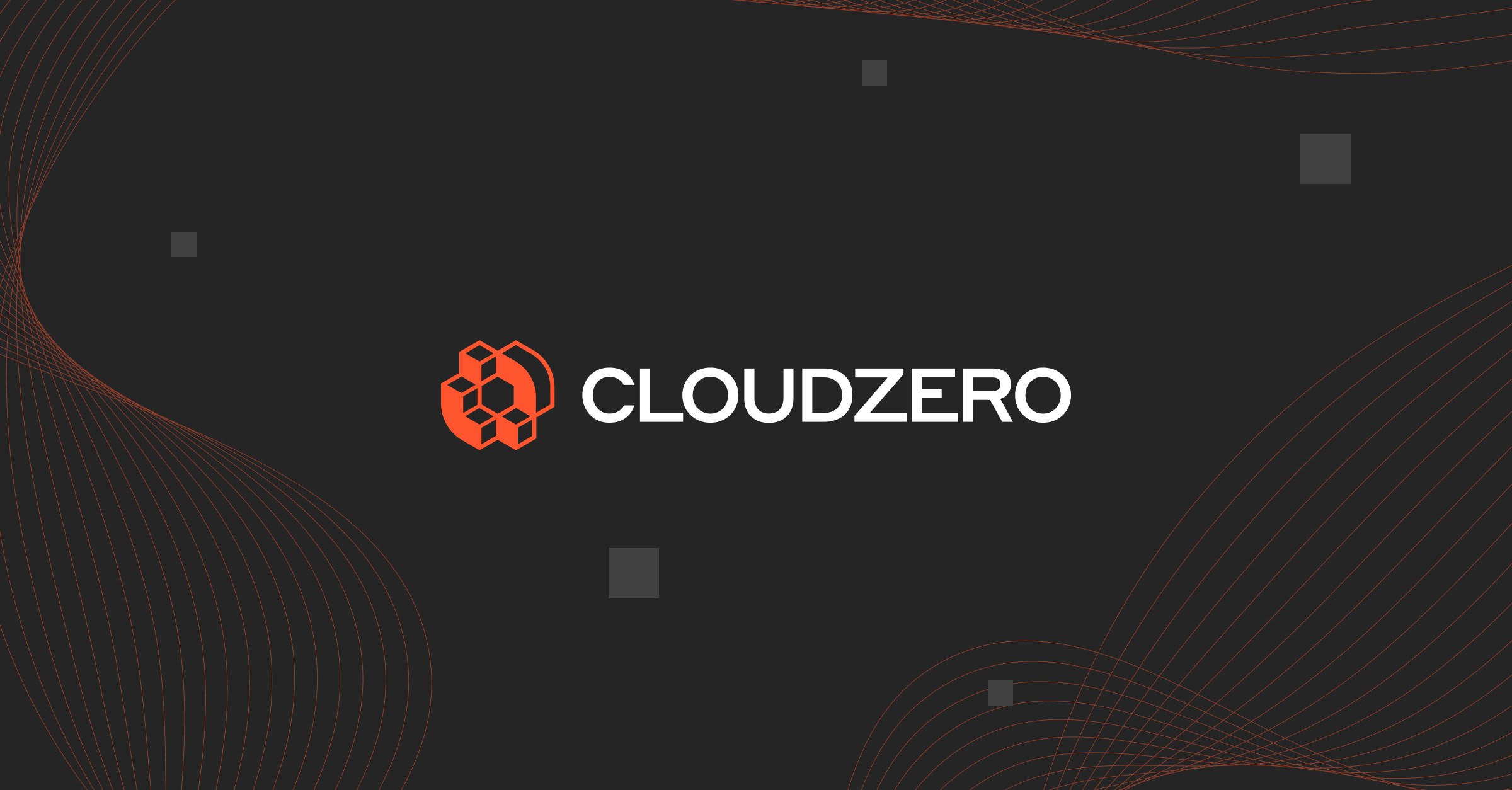Over the next few years, the cloud computing market is expected to grow at a compound annual growth rate (CAGR) of 18.3%. Cloud-based services are becoming increasingly popular among businesses of all sizes, contributing to the market’s growth.
When you consider the other benefits involved, that makes a lot of sense for business. Recent findings show that cloud services offer a number of advantages over traditional on-premises infrastructure, including superior scalability, resilience, and cost management.
Dive right in to get up to speed with the latest and greatest insights on the cloud computing market size and trajectory. We’ve included the following:
An Overview Of The Cloud Computing Market Right Now
The current cloud computing market is segmented by service, deployment mode, organization size, industry vertical, and region.
Market overview by service – the market is segmented into Infrastructure as a Service (IaaS), Platform as a Service (PaaS), and Software as a Service (SaaS). SaaS is by far the largest segment of the cloud computing market, followed by IaaS and PaaS.
Market overview by deployment mode – the market is segmented into public cloud, private cloud, and hybrid cloud. The public cloud is the largest segment of the cloud computing market, followed by private cloud and hybrid cloud.
Market overview by organization size – the market is segmented into small and medium-sized enterprises (SMEs) and large enterprises. Large enterprises are the largest segment of the cloud computing market, followed by SMEs.
Market overview by industry vertical – the market is segmented into BFSI, healthcare, retail, IT and telecom, manufacturing, government, and others. BFSI is the largest segment of the cloud computing market, followed by healthcare, retail, IT and telecom, manufacturing, government, and others.
Market overview by region – the market is segmented into North America, Europe, Asia Pacific, and the Rest of the World. North America is the largest segment of the cloud computing market, followed by Europe, Asia Pacific, and the Rest of the World.
Cloud Computing Market Size At A Glance
- Global cloud market hits $912.77B in 2025, projected to reach $5.15T by 2034
- Growth continues at 21.2% CAGR over the next decade
- Public cloud spend climbs to $723B, with SaaS alone near $300B
- AI adoption surges — 79% use AI/ML, 72% using generative AI tools
- Microsoft leads enterprise SaaS, followed by Salesforce and Adobe
- Hybrid and multi-cloud strategies are now the norm
- One-third of enterprises spend over $12M annually on cloud
- Cost control and security still major concerns
- Green cloud adoption may cut emissions by up to 7%
First Up: 6 Must-Know Cloud Computing Market Insights
Here are insights about the cloud computing market today that stand out.
1. The global cloud computing market size is valued at over $900 billion in 2025 (Precedence Research)
The global cloud computing market is now worth around $912.77 billion in 2025. Precedence Research predicts that the market will keep growing and could reach $5.15 trillion by 2034, with a CAGR of 21.2% over the next ten years.
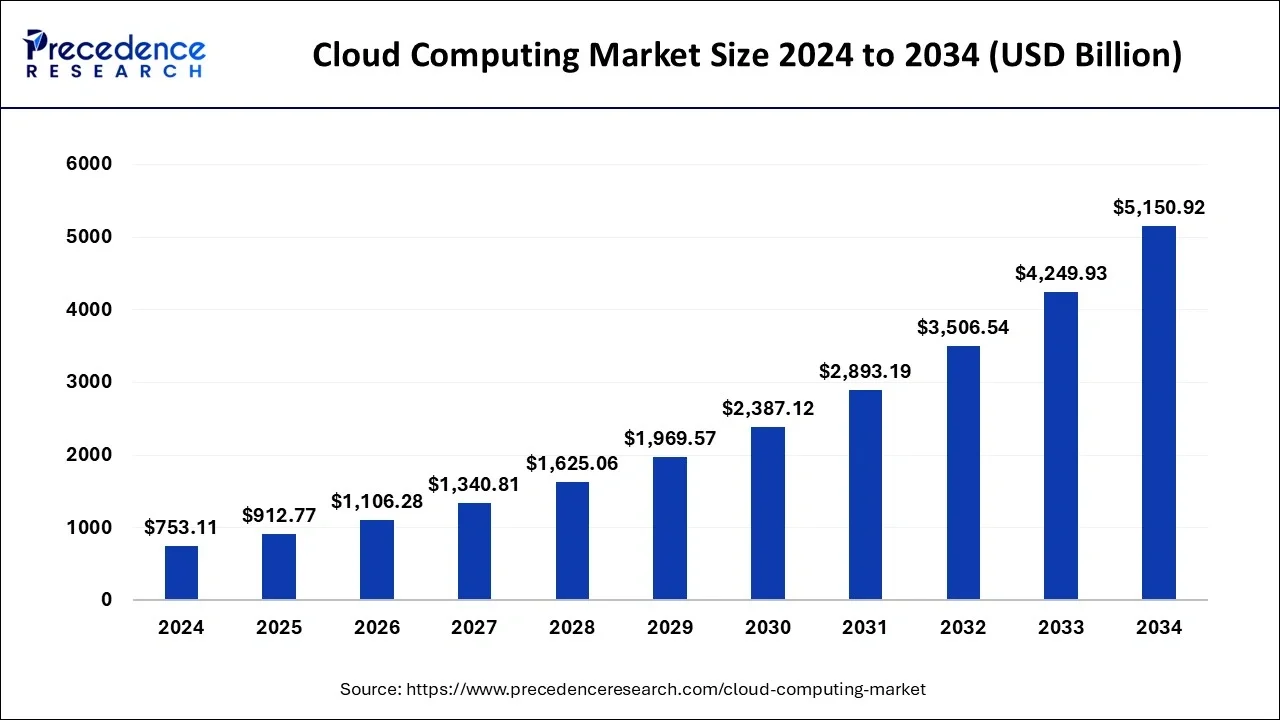
Credit: Precedence Research
2. Adopting the cloud could generate over $3 trillion by 2030 (McKinsey & Company)
By 2030, McKinsey predicts that cloud adoption among Forbes Global 2000 companies will generate an EBITDA value of over $3 trillion. Applying the same assumptions and value drivers to Fortune 500 companies, the research firm estimates this group will generate an EBITDA value of more than $1 trillion in the same period.
3. The cloud computing market is taking over IT budgets from on-premises setups (Source: Gartner)
In 2025, businesses are spending much more on cloud services than on traditional on-site IT systems. Gartner reports that end-user spending on public cloud services is expected to reach $723 billion, marking a 21.5% increase from the previous year. The need for scalability, flexibility, and support for technologies like AI drives this shift.
4. Global spending on the public cloud will reach $723 billion in 2025 (Source: Gartner)
Gartner predicts that worldwide end-user spending on public cloud services will grow to $723 billion in 2025, up from $595.7 billion in 2024.
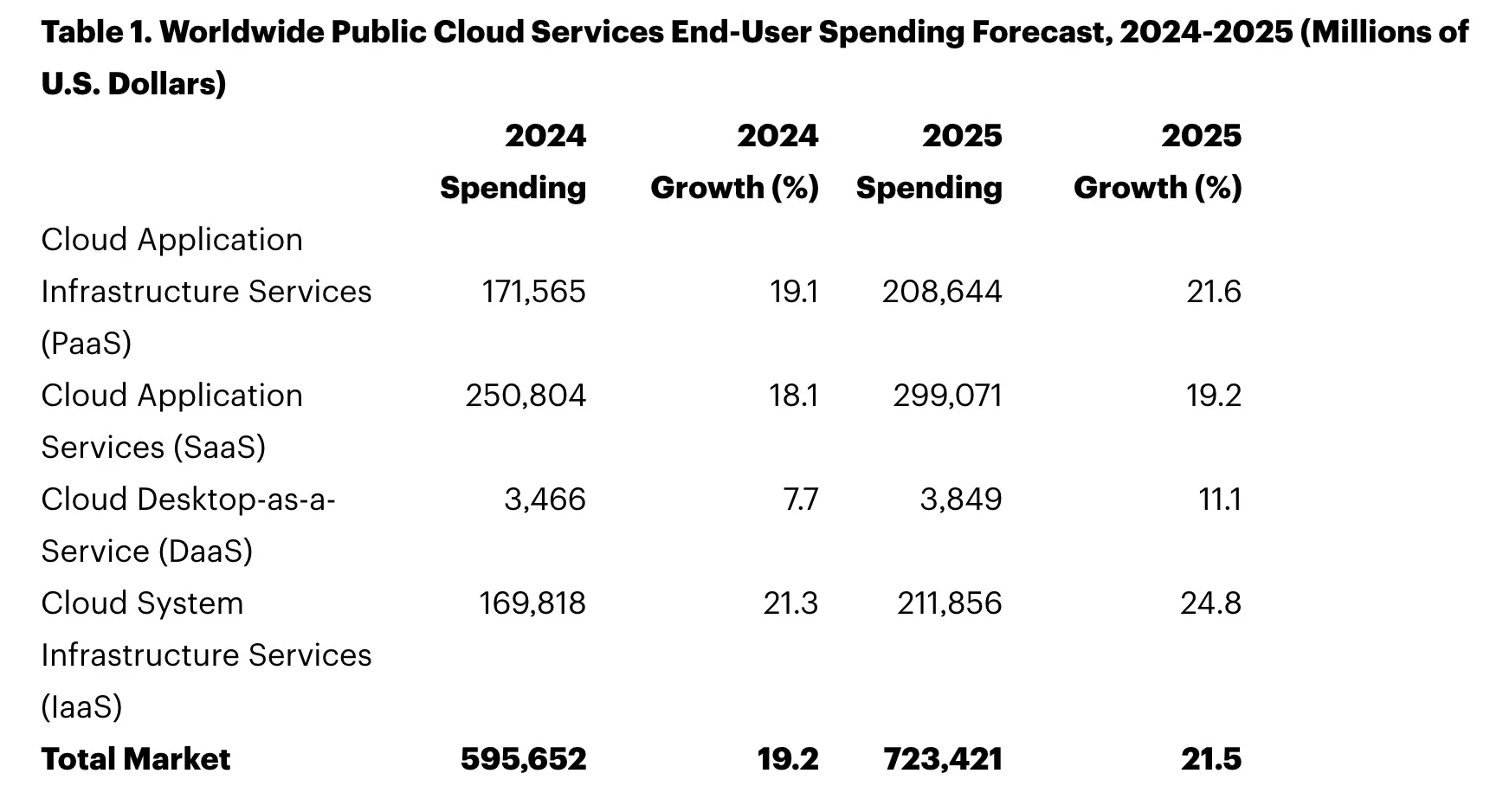
Credit: Global end-user cloud spend forecast 2024 -2025 – Gartner
According to the forecast, IaaS, DaaS, and PaaS will experience the greatest growth in spending.
5. SaaS dominates the public cloud services market (Source: Gartner)
Out of the $723 billion expected in public cloud spending for 2025, SaaS is expected to account for around $300 billion. That’s more than a third of the total
6. Cloud-based workloads now make up over half of all workloads (Source: Flexera 2025 State of the Cloud Report)
As of 2025, more than 50% of organizations run most of their workloads in the cloud. This is an increase from previous years, indicating that cloud computing has become the primary environment for many businesses.
What Are The Factors Limiting The Growth Of The Cloud Computing Market?
While there are several challenges in cloud computing, two dominate:
7. Managing cloud costs is the biggest limitation to cloud computing market growth (Source: Flexera)
Both enterprises and SMEs agree that managing cloud costs is their biggest challenge today, according to the State of the Cloud Survey.
CloudZero’s State of Cloud Cost Intelligence Report found that only 42% of organizations say their cloud costs are about where they should be. The rest say they’re either a little too high, way too high, or simply don’t know.
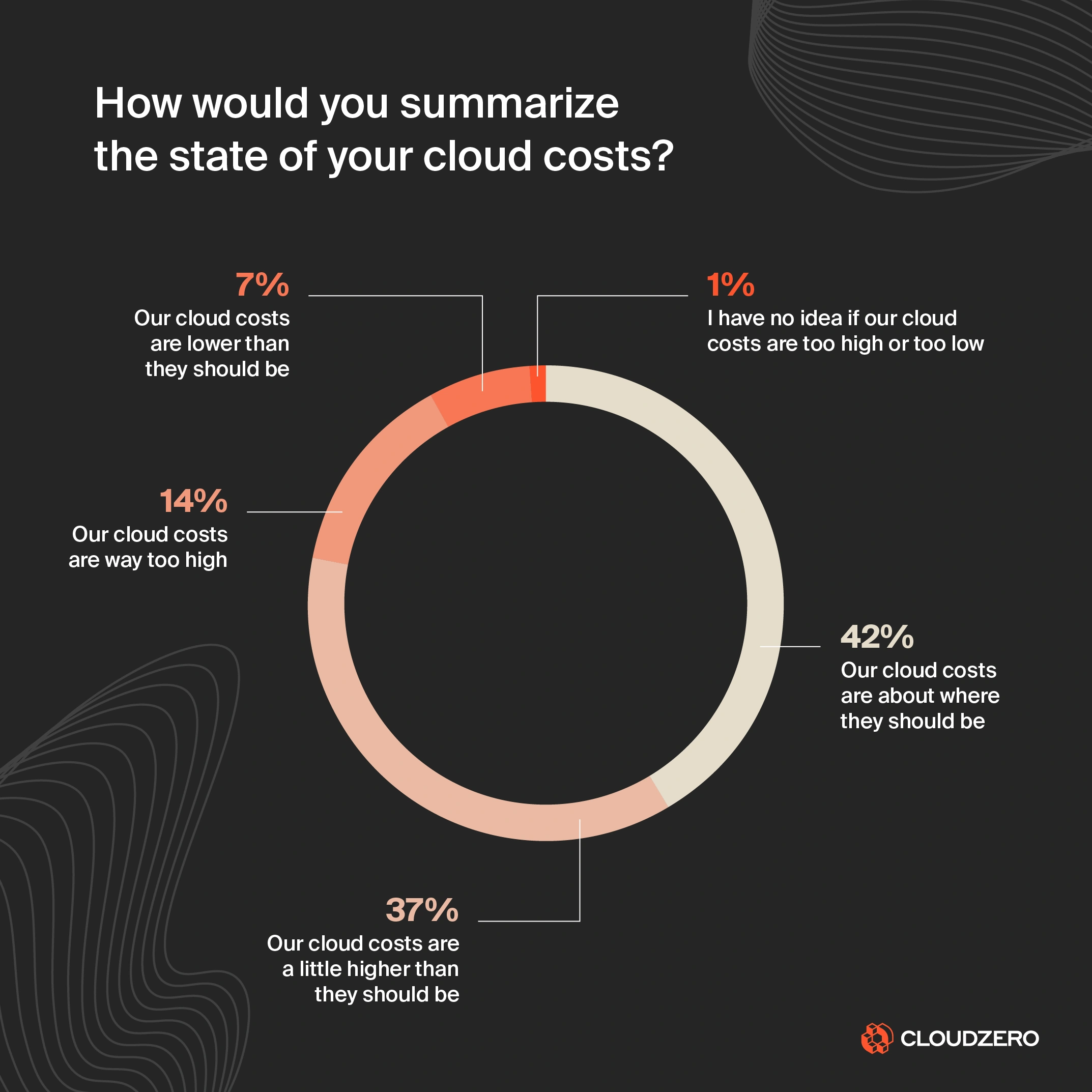
Credit: State of Cloud Cost Intelligence
8. Cloud security concerns still limit cloud adoption (Source: Check Point)
In 2024, Check Point reported that 75% of organizations are still “concerned” or “very concerned” about security in the cloud. About 26% experienced a cloud security incident in the past year. That’s not surprising — IBM’s 2024 report says the average data breach now costs $4.45 million.
9. Cloud-native tools like Dapr are speeding up development (Source: Cloud Native Computing Foundation)
According to CNCF’s 2025 State of Dapr Report, 96% of developers save time using Dapr, and 60% say it boosts productivity by 30% or more. Nearly half of all teams are already running Dapr in production — showing how fast cloud-native tools are catching on.
Related read: Cloud Agnostic Vs. Cloud Native: Key Differences And Use Cases
What Are the Key Companies In The Cloud Computing Market?
The top four cloud service providers dominate the cloud computing market: Amazon Web Services (AWS), Microsoft Azure, Google Cloud Platform (GCP), Alibaba Cloud, IBM Cloud, Salesforce, Oracle Cloud, SAP Cloud Platform, and VMware Cloud.
10. AWS still dominates the cloud infrastructure services market (Source: Synergy Research Group)
AWS holds 30% of the global cloud infrastructure market. Microsoft Azure follows with 21%, and Google Cloud takes 12%. The three cloud giants continue to dominate a market that hit $91B in revenue, growing 22% year-over-year.
Alibaba Cloud now has 4%, down from previous years. While it no longer ranks third overall, it remains strong in the Asia-Pacific region, especially for IaaS. AWS still leads in IaaS, Azure is ahead in PaaS, and Google Cloud stands out in AI/ML services
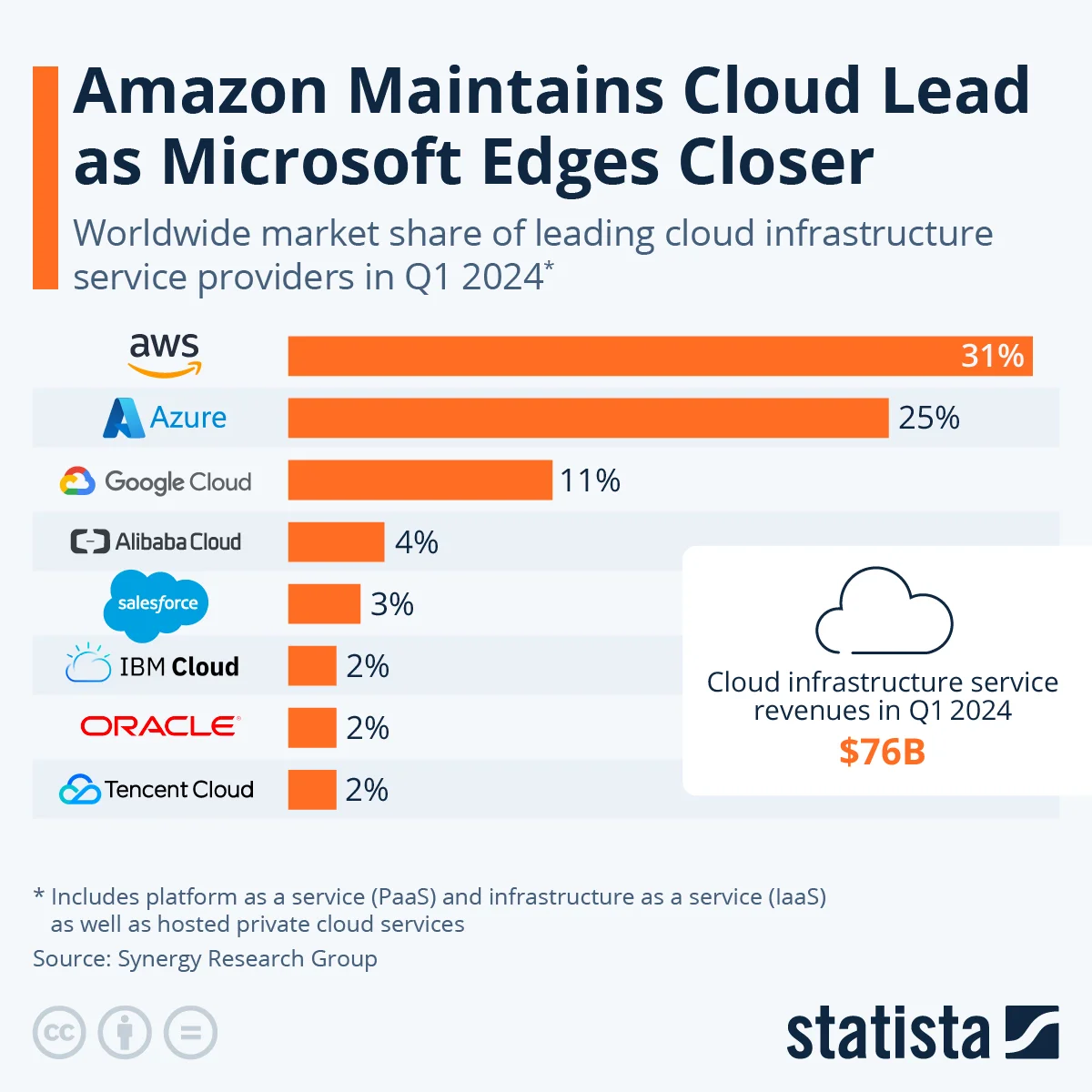
Credit: Cloud infrastructure services market share
11. Salesforce and Adobe are the largest SaaS companies in the world (Source: Mike Sonders)
Salesforce pioneered SaaS as we know it today 25 years ago, and has since dominated the sector by providing some of the best SaaS tools for businesses today.
According to Mike Sonders, Adobe recently overtook Salesforce as the largest public SaaS company worldwide by valuation, although the latter still earns much more.
12. Is Azure bigger than AWS in the enterprise cloud computing market? (Source: Flexera)
Flexera’s 2025 State of the Cloud Report shows 81% of enterprises use Azure, slightly more than the 79% that use AWS. Azure’s tight integration with Microsoft tools keeps it a favorite for large organizations.
Wondering which top cloud service provider to choose now? Check out our AWS vs Azure vs Google Cloud comparison guide here. You can also compare AWS vs Azure if you’ve already narrowed your choices down to these two.
Cloud Computing Market By Region
North America and Europe contribute the most to cloud computing market size, in terms of both the number of companies and spending.
13. North America leads the global cloud computing market (Source: Various)
Picture this:
- 4 out of 5 top cloud service providers are based in the US alone. That includes AWS, Azure Cloud, GCP, and IBM
- Out of the estimated 33,000 SaaS companies worldwide, the US is home to more than 17,000 of the SaaS providers
- North America contributed 41% of revenues from the global cloud computing market in 2022, according to Precedence Research
Also, the US market in particular helps the cloud computing sector grow by being early adopters of technologies such as AI, ML, Virtual Reality (VR), and other technologies, according to Grand View Research.
14. Cloud services are booming in China (Source: Canalys)
China’s cloud infrastructure spending hit $46 billion in 2025, up 15% from 2024. Growth is fueled by rising AI adoption and strong demand across local providers such as Alibaba, Huawei, and Tencent. The Pacific region as a whole will generate over $200 billion for the global cloud computing market by 2024.
15. Europe’s cloud market is growing steadily (Source: Mordor Intelligence)
In 2025, Europe’s cloud computing market is worth $201.86 billion. It’s expected to reach $428 billion by 2030. While growth continues, local providers still trail behind U.S. giants like AWS, Azure, and Google Cloud.
Cloud Computing Market Insights By Industry
The technology sector dominates cloud adoption. Yet the digital transformation is happening across all industries, from manufacturing to healthcare. And this is helping grow the cloud computing market size.
16. The healthcare cloud computing market is expected to grow to $201 billion (Source: GlobeNewswire)
Across the globe, cloud computing in the healthcare sector is estimated to surpass the $201 billion threshold by 2032, sustaining a CAGR growth of 17.6%.
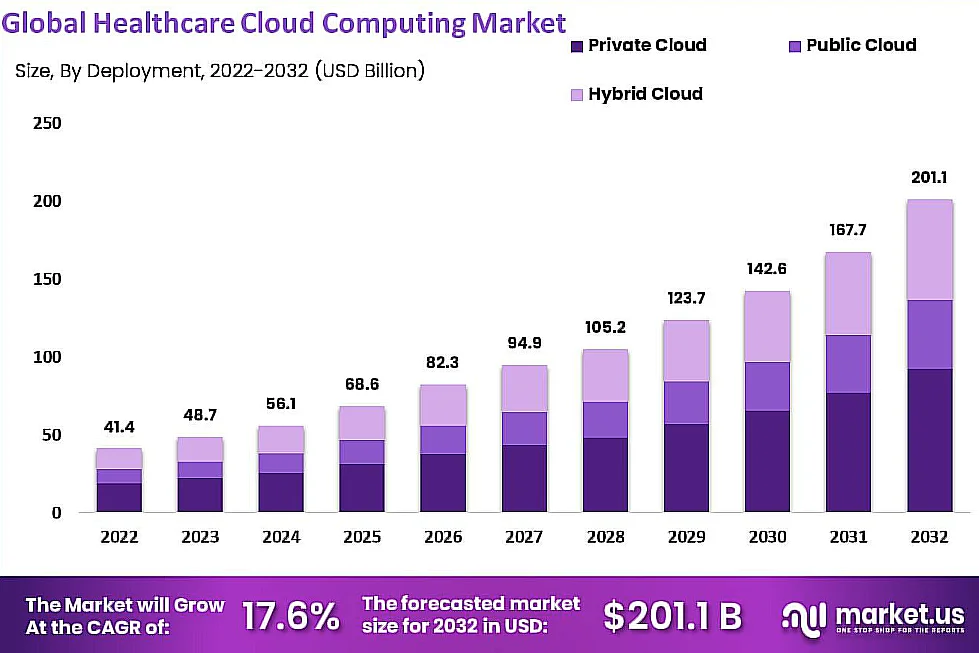
Credit: Growth of the global cloud computing market over a decade
17. More than one-third of commercial real estate leaders say they’ll invest in cloud computing (Source: Deloitte)
The Deloitte survey asked 400 commercial real estate professionals what technologies they intended to invest in. The executives agreed that cloud computing was the top priority — over blockchain, AI, and data analytics.
18. The rise of Artificial Intelligence (AI), Machine Learning (ML), and the Internet of Things (IoT) continues (Source: Cisco)
A Cisco survey found that respondents were interested in a number of these technologies, citing their potential to enhance hybrid and multi-cloud use cases. Among these are infrastructure automation (49%) and edge computing (41%), as well as composable infrastructure (27%).
Infrastructure as code (IaC) is also becoming more popular for security and efficiency reasons:
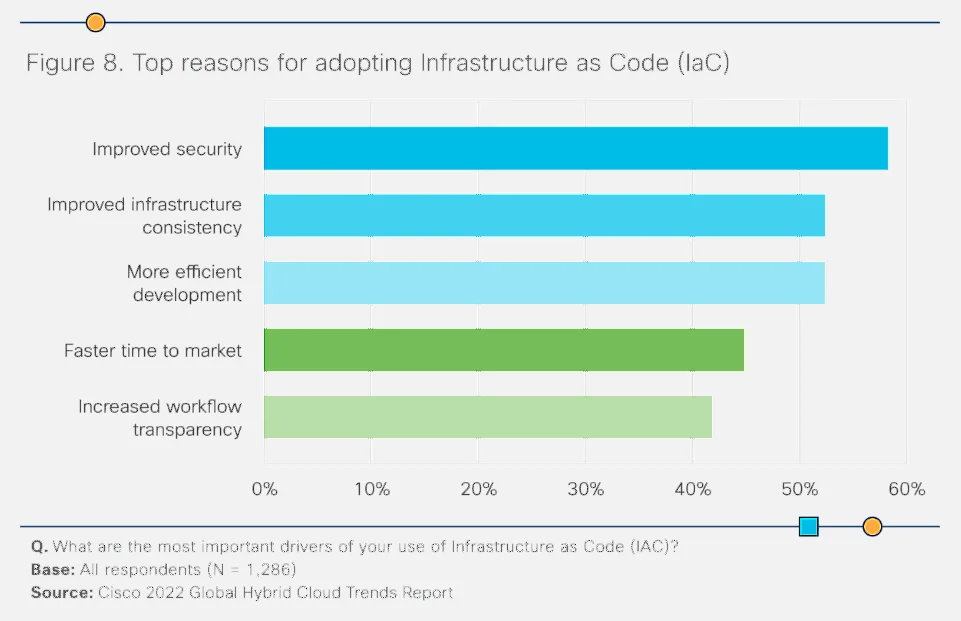
Credit: Global Hybrid Cloud Trends Report on IaC
19. Cloud gaming hits $8.5 billion in 2025 (Source: Persistence Market Research)
The global cloud gaming market is now worth $8.5 billion, up from $6.7 billion in 2024. Services like Xbox Cloud Gaming, GeForce Now, PlayStation Now, and Amazon Luna are expanding the market fast — with projections reaching $68.2 billion by 2032.
What Is The State Of The Enterprise Cloud Computing Market?
The enterprise sector drives the most growth in the cloud computing market. Here are some interesting findings:
20. Microsoft leads the enterprise SaaS market (Source: Vena Solutions)
As of 2025, Microsoft holds the largest share of the enterprise SaaS market, driven by its dominance in productivity and collaboration tools. Salesforce and Adobe follow, with Salesforce maintaining a strong presence in CRM solutions. The global SaaS market is projected to grow at a CAGR of 19.38% between 2025 and 2029, reaching a market volume of $793.10 billion by 2029.
21. The average enterprise has embraced hybrid cloud deployments (Source: Flexera)
Today, enterprises use an average of 2.6 public clouds and 2.7 private clouds. Something else. These large organizations are also exploring how to incorporate an additional 1.1 public clouds and 2.2 private ones.
22. A third of enterprises spend at least $12 million annually on the public cloud (Source: Flexera)
Flexera’s 2025 report shows 33% of enterprises spend more than $12 million annually on public cloud. Another 11% spend over $60 million, as AI and cloud workloads grow fast.
What Cloud Services Do Organizations Use In The Cloud?
Cloud computing enables organizations to run a wide variety of services. Also, the most popular cloud services are continually evolving to meet market demands.
23. Data warehouse, relational databases, and push notifications are the most popular cloud services today (Source: Flexera)
Flexera’s report shows 79% of organizations are using or testing AI/ML services, and 72% are adopting generative AI. Data warehouses, relational databases, and push notifications remain widely used, while Container-as-a-Service (CaaS), serverless, and disaster recovery are also gaining traction.
Related read: Data Warehouse Vs. Data Lake (Vs. Data Mart): A Full Breakdown
Cloud Computing Market By Deployment
Consider these findings:
24. Hybrid cloud deployments are now the norm (Source: Cisco Systems)
Cisco reports 82% of organizations use hybrid cloud setups, and 92% rely on multiple public cloud providers. Just 8% stick to a single IaaS provider — as most teams aim for flexibility, security, and access to more services.
The Latest Trends In Today’s Cloud Computing Market
We’ll continue to see changes as the cloud computing market evolves. The following are just a few trends making waves right now.
25. The remote desktop market is likely to exceed $4 billion in three years (Source: Research and Markets)
The remote desktop software market includes sales from organizations, sole traders, and partnerships. The tools enable local users to access a remote computer’s desktop environment and resources remotely, which can further facilitate remote working and technical customer support.
26 Serverless cloud computing market size to grow through 2030 (Source: MarketWatch)
Serverless computing has gained popularity since it minimizes the hassle of provisioning, configuring, deploying, optimizing, and maintaining physical servers within a data center. Instead, serverless providers offer scalable computing capacity to organizations that prefer to focus on optimizing their applications rather than on the handiwork.
27. The rise and rise of the edge computing market is inevitable (Source: IDC Research)
Edge computing involves processing data closer to its source, which enables faster processing speeds and leads to faster actionable outcomes in real-time.
Around 33% of all workloads could run at the edge by 2025. Some of tech’s biggest names are paying attention, too.
- Microsoft CEO Satya Nadella has recently described how edge computing helped Microsoft prepare for the future.
- In his keynote address at Dell Tech World, Michael Dell forecasted that investments in edge infrastructure would reach $700 billion over the next decade.
According to IDC, spending on hardware, software, and services related to edge computing will exceed $250.6 billion by 2024. Companies in the industrial, energy, and transportation sectors are already reaping the benefits, according to the findings.
28. Green computing market
Green computing is about making cloud computing energy-efficient and eco-friendly, considering the current global warming situation. According to some estimates, green computing could reduce carbon emissions by 7%.
Here are some examples of what’s happening now:
- Energy-efficient chips, such as those from IBM and Samsung, which are 85% more energy-efficient than scaled finFET transistors.
- Liquid-cooling and cool ambient air for large data centers.
- NVIDIA DGX A100 graphics chips that are 5X energy-efficient than traditional ones.
- Products and electronics that meet the EPEAT criteria. The Green Electronics Council says it’s helped save nearly 400 million megawatt-hours with the 1.5 billion green products it has recommended so far.
- ISO standards: the ISO 14000 certification for environmental management systems, the ISO 50001 specification for energy management systems, the ISO 50002 standard for energy audits, and the ISO/IEC 33000, a standard developed by ISO and IEC’s joint technical committee to assess IT processes.
Now, here’s the deal.
Want To Waste Fewer Greens On Your Cloud Computing Needs? CloudZero Can Help
You could save $2.4 million annually, like Drift, reduce your cloud storage costs by 55%, like LawnStarter, and save 10 hours a week managing cloud costs, like MalwareBytes, while the average organization loses 32% of its cloud budget (as happened in 2022).
With CloudZero, you can also be one of the four out of 10 organizations that know where their cloud spend is going.
CloudZero helps you understand your multi-cloud costs down to the specific people, products, and processes that drive them. Think: cost per individual customer, per product feature, per environment, per team, per project, and more.
Consider this:
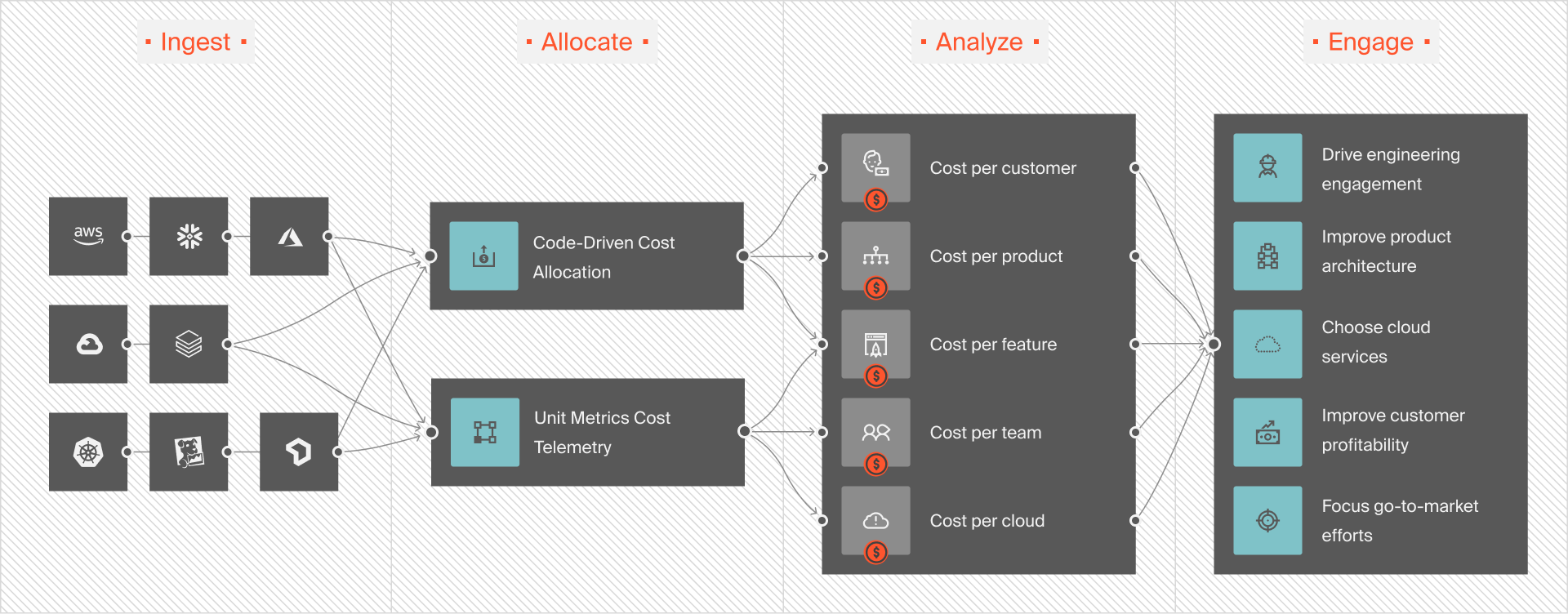
CloudZero lets you see all your AWS, Azure, and GCP costs with just one tool, and consistently so — even when viewing your costs by pod or per hour in Kubernetes, like this:
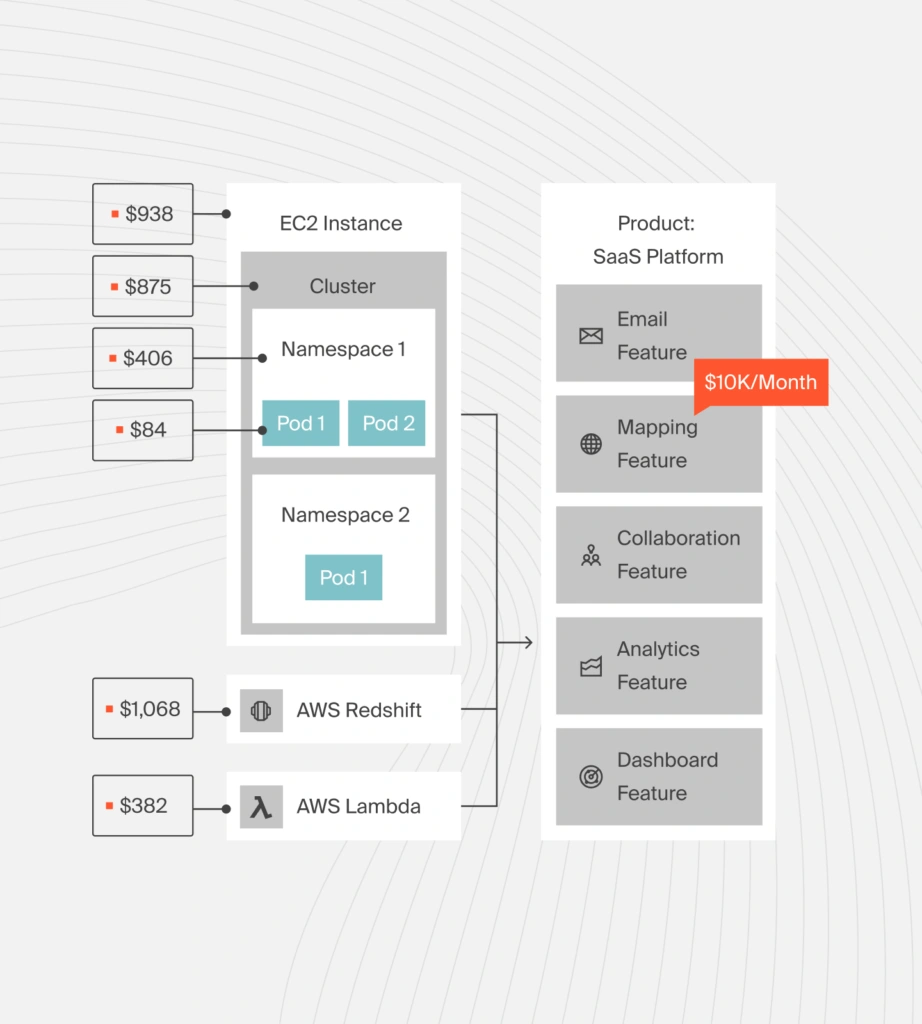
And, instead of this:

You don’t even need perfect tags to get all this cost intelligence at your fingertips. CloudZero helps you capture the costs of tagged, untagged, and untaggable resources, as well as shared resources, without endless tagging.
Ultimately, CloudZero helps you detect cost anomalies in real-time and sends you timely, context-rich alerts straight to your Slack, so you can stop the bleeding ASAP.
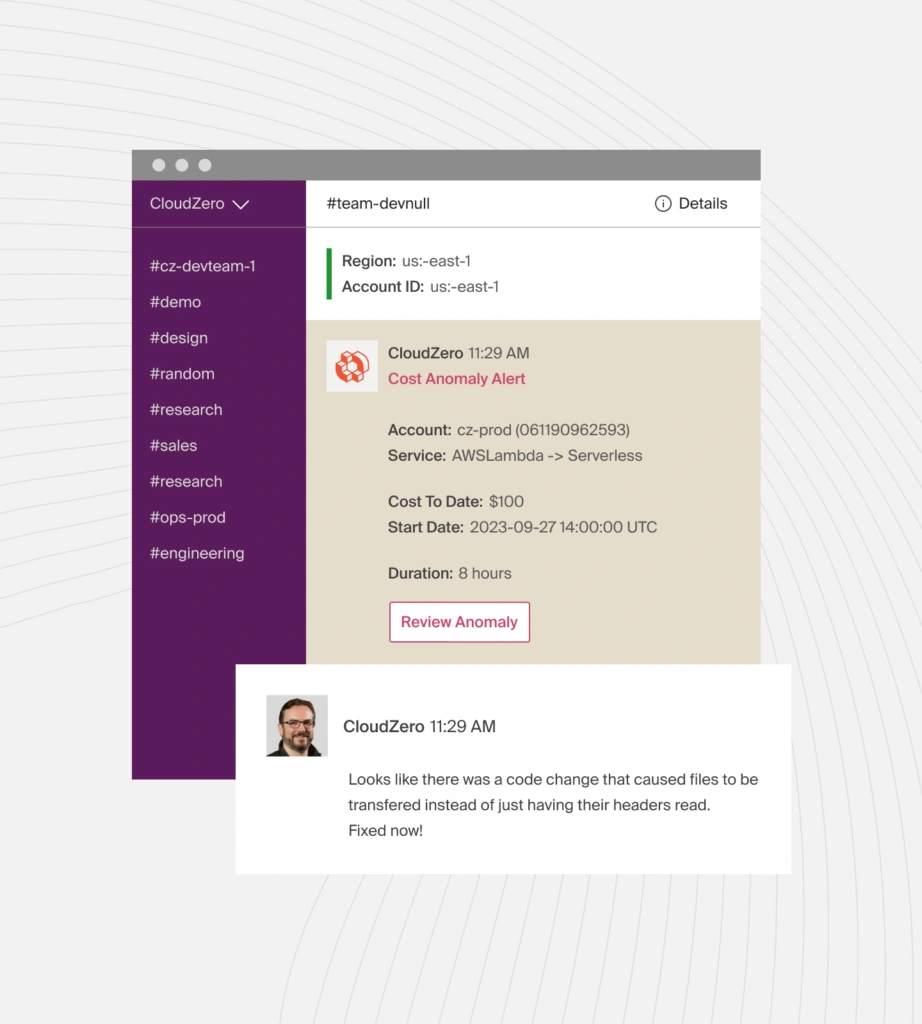
By taking advantage of this, you can avoid cost overruns and protect your margins.
Sound like a plan?  to experience CloudZero for yourself. From Drift to MalwareBytes to Remitly, you’ll be in good company, too.
to experience CloudZero for yourself. From Drift to MalwareBytes to Remitly, you’ll be in good company, too.
Frequently Asked Questions About The Cloud Computing Market Today
How much is the global cloud computing market worth today?
The cloud computing market is valued at over $460 billion in 2023, according to Precedence Research. It is expected to surpass $1 trillion in market value in 2028 and $1.6 trillion in 2032.
Is Azure bigger than AWS?
AWS has a larger market share of the global cloud services market at about 32% in 2023. Microsoft Azure has a 23% market share, but it is now attracting more enterprises than AWS.
What factors are driving the growth in the cloud computing market?
Most organizations migrating to the cloud cite increased agility, resilience, digital transformation, scalability, the switch to OpEx vs CapEx expenditure (pay-as-you-go pricing), disaster recovery, and collaboration as the main reasons for adopting cloud computing.
What are the biggest challenges facing cloud adoption and the growth of the cloud computing market?
Ensuring cloud security and managing cloud costs are the biggest challenges, according to most respondents.
